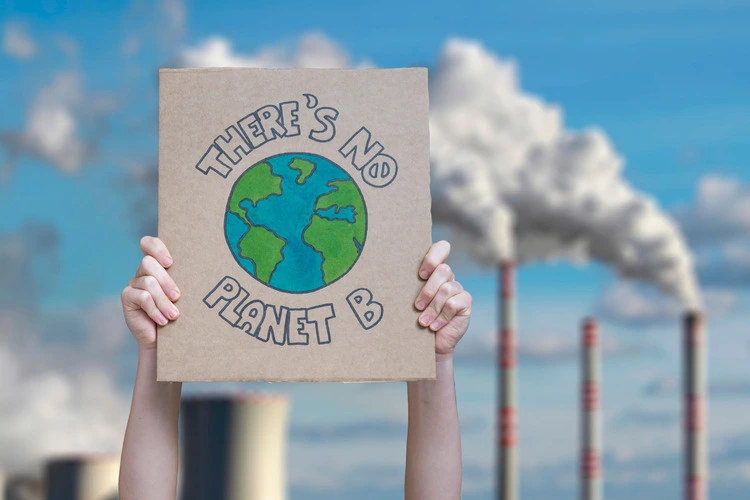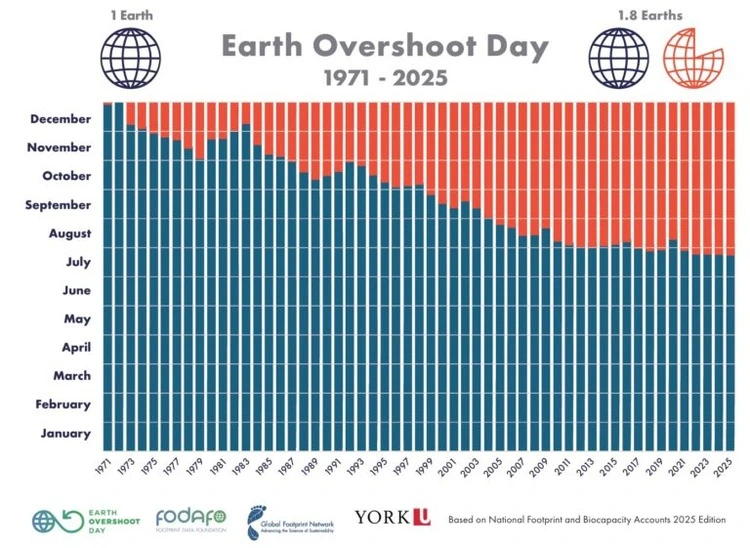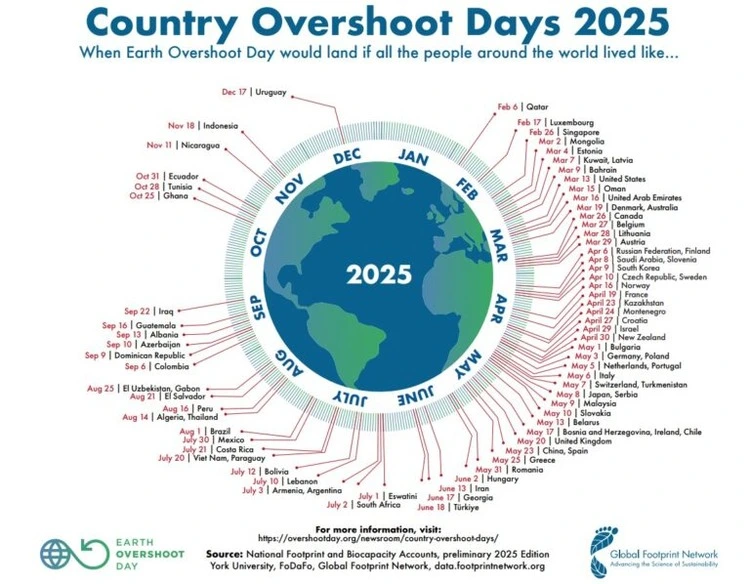
Discover more about Earth Overshoot Day, how it works and what’s being done to ensure the planet can remain stable in an ever-warming climate
By
It’s no surprise that humanity has wreaked havoc upon the climate and environment. From burning fossil fuels and degrading natural landscapes for farmland, to overexploitation with activities such as fishing and hunting, the list of actions taken with negative impacts to the environment is sadly plentiful, and too extensive to list in its entirety.
Enjoying this article? Check out our related reads:
However, the scale of such actions can be difficult to visualise. That’s why a measure – known as Earth Overshoot Day – has been created to help illustrate the impact humans are having. Read on to find out more about Earth Overshoot Day and when it is reached…
Earth Overshoot Day, simplified
Essentially, Earth Overshoot Day marks the day when humanity’s resource consumption exceeds the Earth’s capacity to regenerate those resources for a year.
The exact date is calculated by dividing the planet’s biocapacity (the amount of ecological resources Earth is able to generate that year), by humanity’s ecological footprint (humanity’s demand for that year), and multiplying by 365, the number of days in a year.
To maintain consistency, the Ecological Footprint metrics for all past years since 1961 are recalculated each year, so each year’s metrics share a common data set and the exact same accounting method. Therefore, the annual dates of Earth Overshoot Day are recalculated accordingly.

As such, it is inaccurate to simply look at media accounts from previous years to determine past Earth Overshoot Days. A true comparison of these days can only be made using the same accounts.
For example, comparing the date of Earth Overshoot Day 2007 – as it was calculated that year, and reported by the media at that time – with the date of Earth Overshoot 2025 would not be viable. That’s because improved historical data exists, as well as new findings such as lower net carbon sequestration by forests shifting. Even such minute details as these can shift the date of Earth Overshoot Day by several days.
Below are the recalculated dates of past Earth Overshoot Days (one per decade), as determined with and extended from the National Footprint and Biocapacity Accounts 2025 Edition:
- December 29, 1971
- November 23, 1980
- October 16, 1990
- September 16, 2000
- August 8, 2010
- August 9, 2020
This year, the Earth Overshoot Day is July 24, one day earlier than the value recorded in 2022, 2023 and 2024.
Clearly, the trend is showing how Earth Overshoot Day is getting earlier and earlier since the 1970s. Experts estimate that at the current rate of consumption, it would take approximately 1.7 Earths to produce and regenerate all the resources we use today.
What about individual countries?
Overshoot days are also calculated for each nation around the world. For example, as of 2025 data, if all the people around the world lived like Qatar, Earth Overshoot Day would fall on February 6.
For the day to land within spring, all the people in the world would have to live like nations, including Norway, France, New Zealand and South Korea.

To fall in summer, the world would need to live like countries including Costa Rica, Peru, Mexico and Türkiye. For autumn, it would be following a lifestyle similar to nations such as Iraq, Ghana and Ecuador.
Those countries with the latest – and consequently best – Overshoot Days are Nicaragua (November 11), Indonesia (November 18) and Uruguay (December 17)
How do we make the date as late as possible
Clearly, the aim with Earth Overshoot Day is to make the date as near to December 31 – or later as possible. To reach this goal, there are several ways humanity can help.
The solution of carbon pricing – placing a price of $100 USD per ton of carbon – would move Earth Overshoot Day by 63 days. Ensuring carbon taxes occur around the world would disincentivise high-polluting activities.
Another similar solution would be carbon markets: instead of a fixed cost, the government places a ceiling on emissions and auctions off the right to pollute to companies. In turn, these companies could then buy and sell rights between themselves.
In addition, a further solution touted by Earth Overshoot Day is reducing the number of children born to every other family by one, and postponing parenthood by two years. In doing so, the date would be 49 days earlier. Achieving this would support women’s and girls’ reproductive health with trusted, affordable and easy-to-use contraceptives.
Other ideas include ensuring half the world implements a green deal with the same ambition of the EU’s (resulting in a Earth Overshoot Day 42 days earlier); countries creating more smart cities (29 days earlier) and generating 75 per cent of electricity from low-carbon sources, an increase of 36 per cent from current global levels (26 days earlier).



